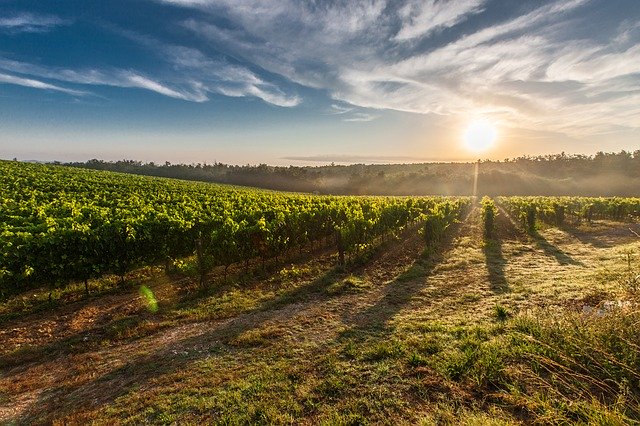Burying biochar in the vineyard.

MOMENT OF INNOVATION..
Stakes.
INNOVATION STATUS.
« Biochar » is the hybrid word composed with « biomass » and « charcoal ». It is a co-product of farming. It results from the pyrolysis of biomass, usually crop residues. The pyrolysis produces :
- Gas that can be used a source of energy or heat
- Oil that can be a source of energy (potentially a source of biofuel that doesn’t generate land use conflicts with food crops)
- Charcoal, sequestrating carbon that can be then released into the ground. This charcoal is the Biochar. (1)
Biochar has many qualities: high and very stable carbon content, high pH, high porosity leading to a large contact surface. This potentially makes it a valuable soil enrichment. Biochar generally improves soil quality where it is buried. (2) It could have a significant role in the mitigation of farming greenhouse gas emissions (reducing the use of fertilizers, sequestrating carbon) and in the adaptation to climate change (improved water retention).
However, biochar is not a constant product: its properties and composition very much depend on the type of biomass used and on the conditions for pyrolysis. Therefore it is quite complicated to produce a low cost biochar with stable properties. Biochar’s quality relies on the supply of crop residues, and on functional installations to conduct pyrolysis.
Regarding the use of biochar in vineyards, it is possible in theory to produce biochar out of grapes’ pulp and pomace. Experiments are currently conducted in the South of France (4), mixing biochar with compost at about 6 tons per hectare. Even though the experiment is still ongoing, first results seem equivoque: they are different, sometimes contradictory, from one region to another (5) but still suggest positive effects to reduce water stress during dry years. Those results are still to be confirmed.
Other experiments led earlier in Italy with a much higher amount of biochar applied (22 tons per hectare) on sandy soils have clearly shown a yield increase in water stress conditions, without altering grape quality. (7) However, it is a very high amount of biochar. Italian researchers suggest that it takes 1 hectare of vineyard to produce 0,5 ton of biochar, which equals 44 hectares of vineyard to produce the biochar enrichment for just one hectare, in the scenario of using only the vineyard’s biomass resources. Consequently, it appears difficult for now to use biochar in vineyards without intervention from outer biomass suppliers, with other logistical challenges to be solved.
Finally, another Italian study from 2017 has shown a significant increase in soil carbon sequestration, as well as in water and ammonium available for vines, with 10 tons of biochar per hectare. But more importantly, researchers have observed a direct effect of biochar to stimulate plant growth and life expectancy of the thinnest roots. (8)
Authors : Marc Nougier (SupAgro), Audrey Naulleau (INRAE)
Sources :
- http://noe21.org/wp-content/uploads/Biochar7.pdf
- Char and Carbon Materials Derived from Biomass : Production, Characterization and Applications, Brassard et al., 2019, pages 109 – 146
- http://www.afaia.fr/wp-content/uploads/2017/05/biochar-reussir-vigne.pdf
- http://www.vignevin-occitanie.com/nos-recherches/agroecologie/projet-vinichar/
- https://www.vitisphere.com/index.php?mode=breve&id=88643
- https://www.mon-viti.com/articles/viticulture/reduire-le-stress-hydrique-de-la-vigne-avec-un-biochar-de-marc-de-raisin
- Impact of biochar application on plant water relations in Vitis vinifera, Baronti et al., 2013
- Short-term effects of biochar on grapevine fine root dynamics and arbuscular mycorrhizae production, Amendola et al., 2017
